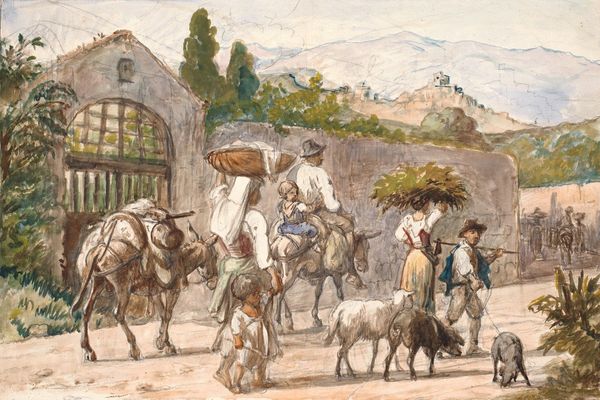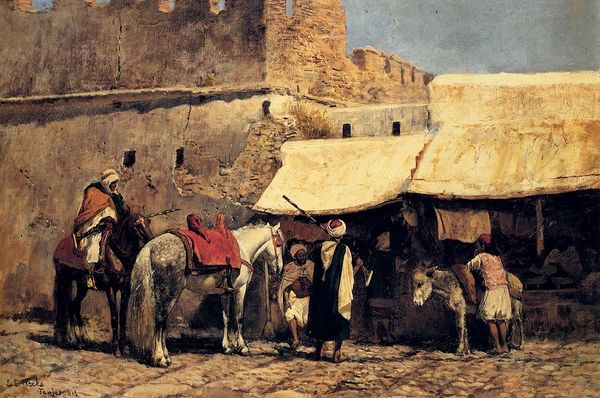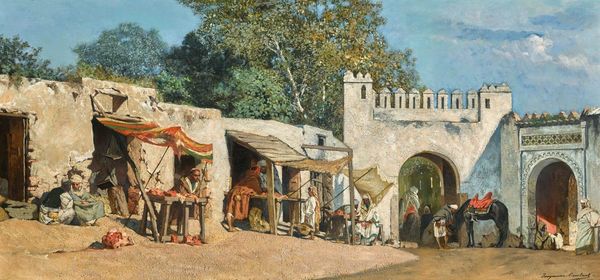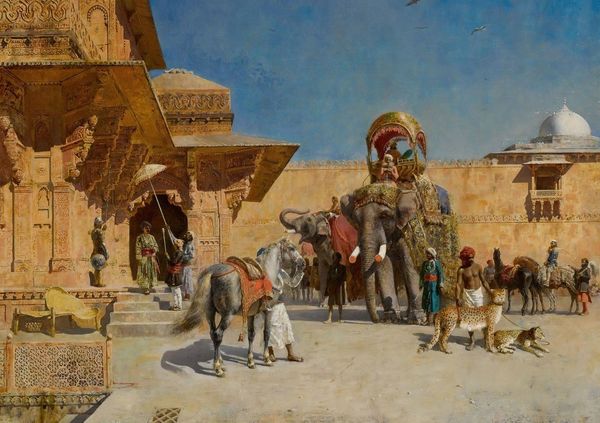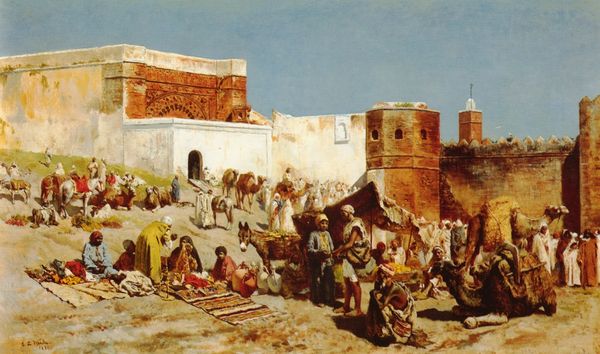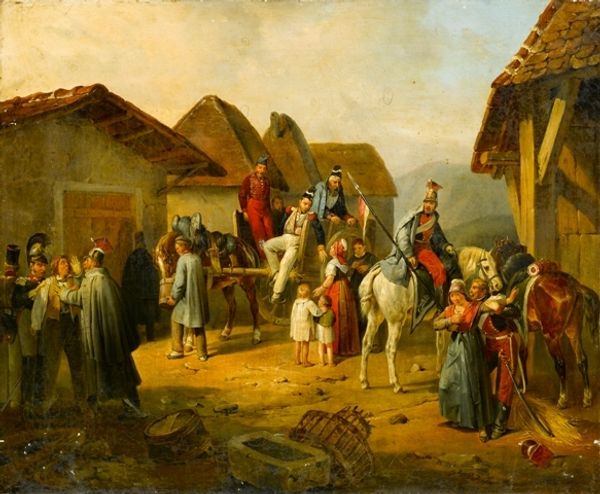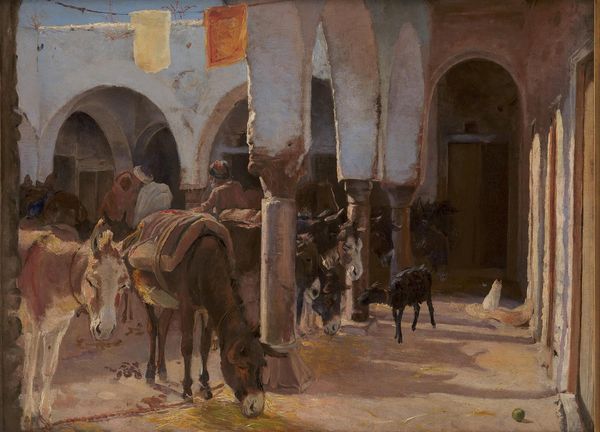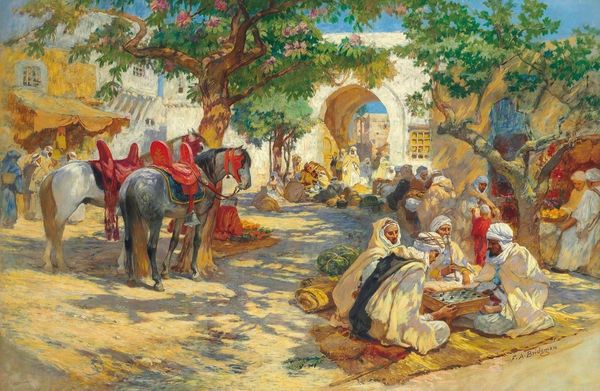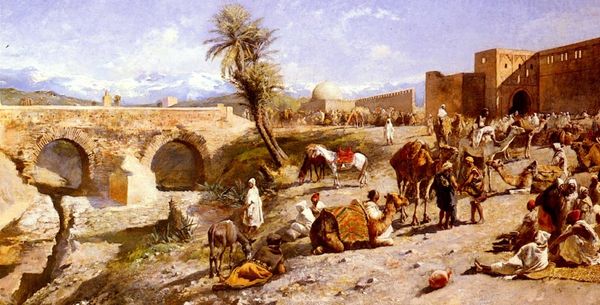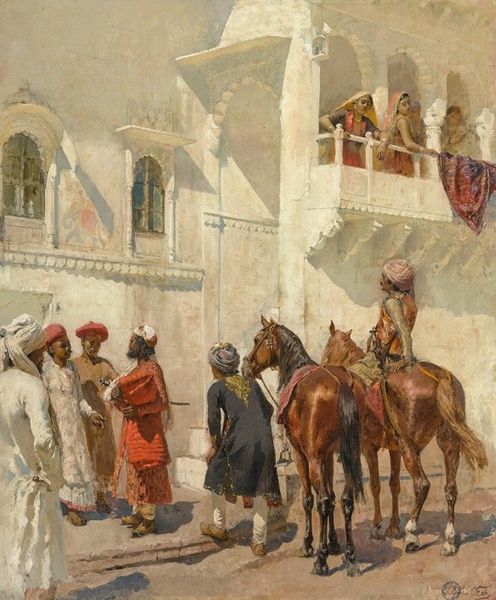
Copyright: Public Domain: Artvee
Curator: "Blacksmith’s Shop at Tangiers," an oil painting created by Edwin Lord Weeks in 1876, offers a glimpse into everyday life in 19th-century Morocco. What strikes you most when you first look at it? Editor: It feels languid. All soft edges and diffused light, like a memory half-forgotten, half-imagined. A blacksmith shop seems like it should have clang and spark, but here, everything feels suspended. Even the sleeping dogs look like they’re dreaming of another, even more still life. Curator: Weeks was part of the Orientalist movement, which often presented a romanticized view of North Africa and the Middle East, and your description aligns well with that aesthetic. The scene captures a sense of timelessness. Editor: Timeless or, perhaps, a little stagnant? I wonder, did Weeks ever pick up a hammer himself? There's a painterly detachment, a tourist's gaze perhaps, that prevents me from feeling any grit. But look at the fortress wall! It is solid, but still appears to have been gently eroded over the centuries. Beautiful. Curator: It's true, Weeks traveled extensively throughout the region and made numerous sketches. We see the influence of those sketches in the detail he gives the architecture, dress, and even the animals. It’s important to acknowledge the colonial context in which these works were created and exhibited and the assumptions made about "the Orient." Editor: Assumptions, yes, but also maybe a longing? I think we forget sometimes that Orientalism, as a cultural movement, reflected anxieties about Western industrialization, a longing for a supposedly simpler, more authentic life. It's telling, isn't it, that he chose a blacksmith shop - the essence of craftsmanship - as his subject? Curator: That longing for an imagined past fueled both artistic and political movements of the time. The painting’s genre scene offers insights into social and economic hierarchies as well as colonial power dynamics. Editor: In that light, even those seemingly indolent dogs could be read as symbolic! It certainly gives me something more to chew on. Thank you, truly. Curator: My pleasure! It is wonderful how examining historical art sheds light on society’s development, values, and even latent desires.
Comments
No comments
Be the first to comment and join the conversation on the ultimate creative platform.
